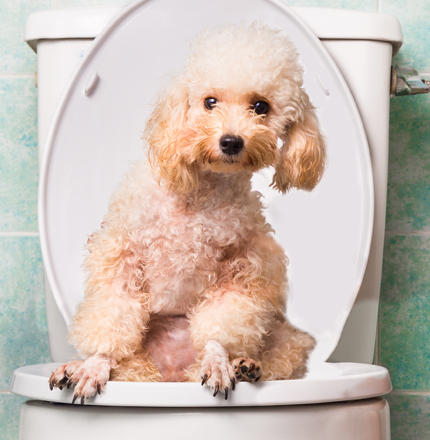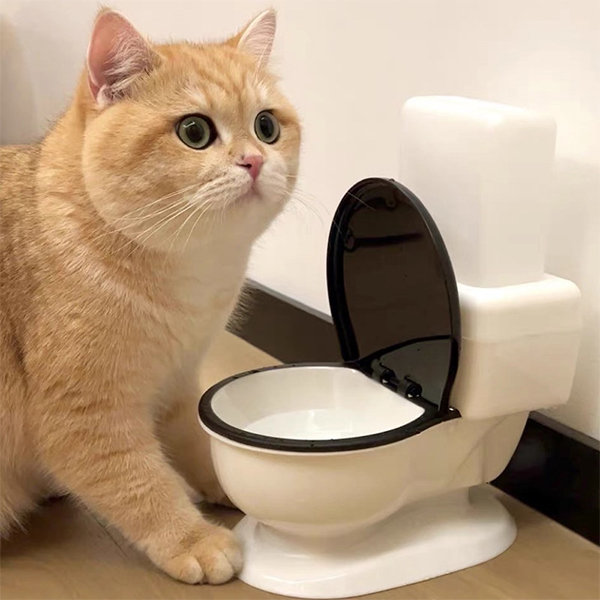They are making a few great pointers about 10 Things You Should Never Flush Down The Toilet overall in the article below.

When it comes to dealing with waste, especially animal waste, many people frequently resort to the convenient option of flushing it down the commode. Nonetheless, this relatively very easy option can have major consequences for the setting and public health. In this write-up, we'll check out why flushing animal waste down the commode is a poor idea and give alternate techniques for proper disposal.
Introduction
Appropriate waste disposal is essential for preserving environmental sustainability and public health. While it may seem harmless to flush animal waste down the bathroom, it can bring about numerous problems, both for the setting and human well-being.
Dangers of flushing pet waste
Ecological effect
Flushing animal waste introduces unsafe germs and virus into waterways, which can adversely impact marine environments. These pathogens can infect water sources and damage aquatic life, interrupting fragile communities.
Public health problems
Animal waste consists of harmful microorganisms such as E. coli and Salmonella, which can pose severe wellness risks to people. Flushing pet waste down the commode can infect water supplies, resulting in the spread of illness and infections.
Alternatives to flushing
Instead of flushing pet waste down the toilet, there are several alternative disposal methods that are more eco-friendly and sanitary.
Composting
Composting pet waste is an eco-friendly means to deal with it. By composting, organic matter is broken down right into nutrient-rich dirt, which can be utilized to feed gardens and plants.
Land fill disposal
Disposing of pet waste in a landfill is one more option. While not as eco-friendly as composting, it is a much safer choice to flushing, as it avoids the contamination of water resources.
Pet waste disposal systems
There are customized pet waste disposal systems readily available that securely and hygienically deal with pet waste. These systems usually utilize enzymes to break down waste and remove smells.
Steps to proper animal waste disposal
To make sure correct disposal of pet waste, adhere to these actions:
Scooping and landing waste
Frequently scoop and bag pet waste making use of naturally degradable bags. This protects against waste from infecting the atmosphere.
Making use of designated waste bins
Dispose of bagged animal waste in assigned waste containers, such as garden compost bins or landfill containers. Stay clear of flushing it get more info down the commode in all expenses.
Cleansing can and animal areas frequently
Frequently clean can and animal locations to avoid the buildup of waste and microorganisms. Use pet-safe cleansing products to keep hygiene.
Advantages of proper disposal approaches
Adopting correct disposal methods for pet waste offers a number of benefits:
Decreased environmental pollution
Appropriate disposal approaches decrease the danger of environmental pollution, protecting waterways and ecological communities from contamination
Reduced danger of water contamination.
By staying clear of flushing pet waste down the toilet, the risk of water contamination is considerably minimized, guarding public health.
Boosted hygiene and health
Correct disposal approaches advertise far better hygiene and health, producing a much safer atmosphere for both people and animals.
Final thought
In conclusion, flushing animal waste down the toilet is harmful to the setting and public health. By taking on different disposal techniques and complying with proper waste administration methods, we can reduce the negative influence of animal waste and contribute to a cleaner, much healthier world.
Why You Should Never Flush Cat Poop Down the Toilet
A rose by any other name might smell as sweet, but not all poop is created equal. Toilets, and our sewage systems, are designed for human excrement, not animal waste. It might seem like it couldn’t hurt to toss cat feces into the loo, but it’s not a good idea to flush cat poop in the toilet.
First and foremost, assuming your cat uses a litter box, any waste is going to have litter on it. And even the smallest amount of litter can wreak havoc on plumbing.
Over time, small amounts build up, filling up your septic system. Most litter sold today is clumping; it is made from a type of clay that hardens when it gets wet. Ever tried to scrape old clumps from the bottom of a litter box? You know just how cement-hard it can get!
Now imagine just a small clump of that stuck in your pipes. A simple de-clogger like Drano isn’t going to cut it. And that means it’s going to cost you big time to fix it.
For an amusing, graphic tale of what happens when you flush too much litter down the toilet all at once, take a few minutes to read Gene Weingarten’s 2017 Washington Post column “So that’s what happens when you flush cat litter down the toilet.”
Parasitic Contamination
Believe it or not, your healthy kitty may be harboring a nasty parasite. Only cats excrete Toxoplasma in their feces. Yet it rarely causes serious health issues in the cats that are infected. Most people will be fine too if infected. Only pregnant women and people with compromised immune systems are at risk. (If you’ve ever heard how women who are expecting are excused from litter cleaning duty, Toxoplasma is why.)
But other animals may have a problem if infected with the parasite. And human water treatment systems aren’t designed to handle it. As a result, the systems don’t remove the parasite before discharging wastewater into local waterways. Fish, shellfish, and other marine life — otters in particular — are susceptible to toxoplasma. If exposed, most will end up with brain damage and many will die.
Depending on the species of fish, they may end up on someone’s fish hook and, ultimately on someone’s dinner plate. If that someone has a chronic illness, they’re at risk.
Skip the Toilet Training
We know there are folks out there who like to toilet train their cats. And we give them props, it takes a lot of work. But thanks to the toxoplasma, it’s not a good idea.
Leave the toilet to the humans, and accept your future litter cleaning duty.

Frequently clean can and animal locations to avoid the buildup of waste and microorganisms. Use pet-safe cleansing products to keep hygiene.
Advantages of proper disposal approaches
Adopting correct disposal methods for pet waste offers a number of benefits:
Decreased environmental pollution
Appropriate disposal approaches decrease the danger of environmental pollution, protecting waterways and ecological communities from contamination
Reduced danger of water contamination.
By staying clear of flushing pet waste down the toilet, the risk of water contamination is considerably minimized, guarding public health.
Boosted hygiene and health
Correct disposal approaches advertise far better hygiene and health, producing a much safer atmosphere for both people and animals.
Final thought
In conclusion, flushing animal waste down the toilet is harmful to the setting and public health. By taking on different disposal techniques and complying with proper waste administration methods, we can reduce the negative influence of animal waste and contribute to a cleaner, much healthier world.
Why You Should Never Flush Cat Poop Down the Toilet
A rose by any other name might smell as sweet, but not all poop is created equal. Toilets, and our sewage systems, are designed for human excrement, not animal waste. It might seem like it couldn’t hurt to toss cat feces into the loo, but it’s not a good idea to flush cat poop in the toilet.
First and foremost, assuming your cat uses a litter box, any waste is going to have litter on it. And even the smallest amount of litter can wreak havoc on plumbing.
Over time, small amounts build up, filling up your septic system. Most litter sold today is clumping; it is made from a type of clay that hardens when it gets wet. Ever tried to scrape old clumps from the bottom of a litter box? You know just how cement-hard it can get!
Now imagine just a small clump of that stuck in your pipes. A simple de-clogger like Drano isn’t going to cut it. And that means it’s going to cost you big time to fix it.
For an amusing, graphic tale of what happens when you flush too much litter down the toilet all at once, take a few minutes to read Gene Weingarten’s 2017 Washington Post column “So that’s what happens when you flush cat litter down the toilet.”
Parasitic Contamination
Believe it or not, your healthy kitty may be harboring a nasty parasite. Only cats excrete Toxoplasma in their feces. Yet it rarely causes serious health issues in the cats that are infected. Most people will be fine too if infected. Only pregnant women and people with compromised immune systems are at risk. (If you’ve ever heard how women who are expecting are excused from litter cleaning duty, Toxoplasma is why.)
But other animals may have a problem if infected with the parasite. And human water treatment systems aren’t designed to handle it. As a result, the systems don’t remove the parasite before discharging wastewater into local waterways. Fish, shellfish, and other marine life — otters in particular — are susceptible to toxoplasma. If exposed, most will end up with brain damage and many will die.
Depending on the species of fish, they may end up on someone’s fish hook and, ultimately on someone’s dinner plate. If that someone has a chronic illness, they’re at risk.
Skip the Toilet Training
We know there are folks out there who like to toilet train their cats. And we give them props, it takes a lot of work. But thanks to the toxoplasma, it’s not a good idea.
Leave the toilet to the humans, and accept your future litter cleaning duty.

I am very taken with 4 Reasons Why Dog Poop Cleanup is Important and I hope you liked the new blog entry. So long as you liked our blog entry plz be sure to share it. Thank you so much for your time invested reading it.
Book A Free Estimate